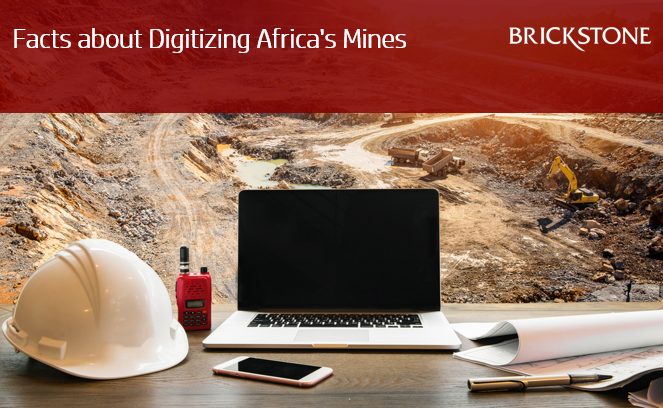Facts about Digitizing Africa’s Mines
Facts about Digitizing Africa’s Mines
The mineral industry of Africa is the second-largest mineral industry in the world, contributing largely as a critical source of revenue for the continent. According to the United Nations, Africa is home to about 30 percent of the world’s total mineral reserves, 12 percent of the world’s oil, 8 percent of the world’s natural gas reserves, and even a higher share of diamonds, vanadium, manganese, platinum, cobalt and gold.
However, despite being this much endowed in terms of mineral resources, the continent remains under-explored, having some of the world’s largest untapped mineral reserves. According to Brookings, unlocking mineral-rich African countries’ full potential, mining companies and African governments must embrace Fourth Industrial Revolution (4IR) technologies such as artificial intelligence (AI), robotics, automation, and big data analytics. Digitizing Africa’s Mines can help mining firms limit damage to the environment, improve working conditions, reduce operating costs, and boost productivity.
This article by Brickstone reviews some institutional reports and publications on the impacts of digitizing Africa’s mines.
Digitizing Africa’s Mines
“The rapid advance of mining digitalization, coupled with regulatory changes, will change the way Africa mines operate and require careful consideration of the impact of those changes to mining stakeholders.”
The digital age is set to disrupt the lives of individuals, communities, organisations, and industries, and the mining industries are no exception. According to African Business, mines on the African continent need to be aware of the impending changes to their business, and of the impact of those changes to the societies in which they operate. This includes the challenging labour conditions, regulatory changes, upward cost pressures, commodity price downturn, and unpredictable international politics.
As a result, new skills, changing workforce, organisational restructuring, and adoption of new technologies and digital infrastructures are all important to navigate in this era. This will drive a competitive innovation and sustainable mining practices and operations.
Facts about Digitizing Africa’s Mines
Summarily, the following are facts about digitalizing Africa’s Mines:
Autonomous 4IR technologies complement the clean-energy transition by cutting fuel consumption in processes such as loading, hauling, crushing, and drilling. Hence, the adoption of efficient renewable-energy systems will help the mining sector reduce its environmental impact. The driverless technology is estimated to lead to a 10-15 percent decrease in fuel use on mine sites.
Mining companies generate enormous amounts of data in the course of their operations, but few of them use it in a way that provides real value. Better use of data and analytics can improve mine performance by optimizing mine planning, increasing yields, and reducing equipment downtime. For example, a 30-year-old mine in South Africa boosted its mineral recovery by 2 percent by applying advanced analytics to its main processing steps.
4IR technologies will define the future of mining. The mine of the near future will include remote control of most activities, autonomous or near autonomous driverless vehicles, 3D printing of designs, and an emphasis on non-technical skills as part of the curriculum. As digitizing Africa’s mines become more productive—and more profitable—national governments will have more revenue to spend on investment in infrastructure, like roads, schools, and health clinics.
Digitizing Africa’s mines does not only improve safety, operational efficiency and profit margins, but also help the industry remain competitive, thereby creating an opportunity for greater socio-economic impact. It opens up a range of choices for mining companies to create shared value and economic benefits for the communities in which they operate.
To support the successful implementation of technology in the mining sector, businesses need to optimize their operating structures and processes that will support the new way of work. This includes way of learning, leadership, performance management, workforce engagement, and organizational development.
Conclusion
The opportunities and potential of digitizing Africa’s mines are huge, and industry leaders and policymakers must work together to capitalize on them. Mines that embrace the digital transformation will increase their production, run more efficiently and effectively, and be more environmentally sustainable.
Read more here.





